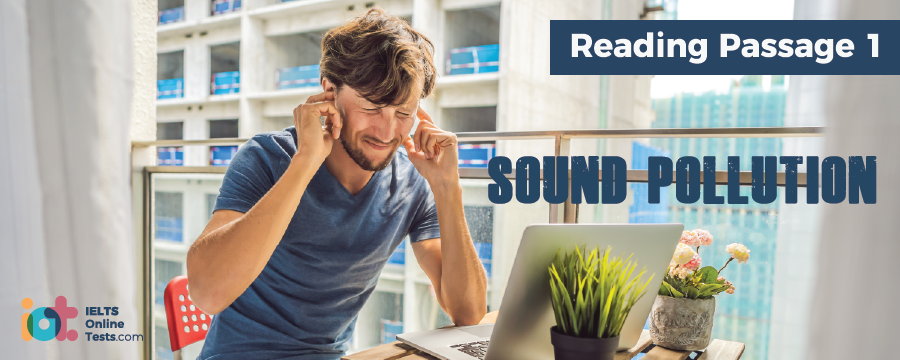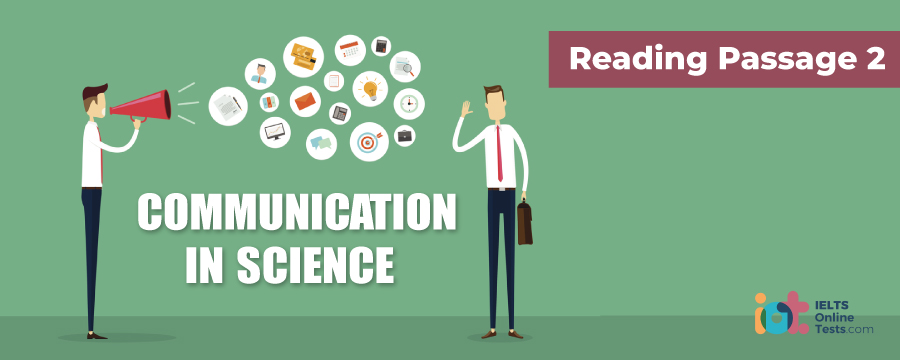
IELTS Mock Test 2021 November
- Đăng ngày: 13 Nov 2021
- Tests taken: 501,102
Đáp án
Part 1: Question 1 - 13
- 1 FALSE
- 2 TRUE
- 3 FALSE
- 4 TRUE
- 5 FALSE
- 6 TRUE
- 7 NOT GIVEN
- 8-9 D,G
- 10 C
- 11 A
- 12 C
- 13 C
- 1 FALSE
- 2 TRUE
- 3 FALSE
- 4 TRUE
- 5 FALSE
- 6 TRUE
- 7 NOT GIVEN
- 8-9 D,G
- 10 C
- 11 A
- 12 C
- 13 C
Part 2: Question 14 - 26
- 14 hairs
- 15 (electric) charge
- 16 pores
- 17 water
- 18 concave
- 19 E
- 20 D
- 21 B
- 22 C
- 23 E
- 24 I
- 25 F
- 26 H
- 14 hairs
- 15 (electric) charge
- 16 pores
- 17 water
- 18 concave
- 19 E
- 20 D
- 21 B
- 22 C
- 23 E
- 24 I
- 25 F
- 26 H
Part 3: Question 27 - 40
- 27 A
- 28 C
- 29 B
- 30 D
- 31 B
- 32 TRUE
- 33 NOT GIVEN
- 34 NOT GIVEN
- 35 NOT GIVEN
- 36 word choices
- 37 colloquial terminology
- 38 observer
- 39 invariant description
- 40 (theory of)general relativity
- 27 A
- 28 C
- 29 B
- 30 D
- 31 B
- 32 TRUE
- 33 NOT GIVEN
- 34 NOT GIVEN
- 35 NOT GIVEN
- 36 word choices
- 37 colloquial terminology
- 38 observer
- 39 invariant description
- 40 (theory of)general relativity
Leaderboard:
| # | Thành viên | Điểm | Thời gian | |
|---|---|---|---|---|
| Dilnaz Muhataeva |  | 9.0 | 15:17 | |
| Mẫn Thị Hiếu Ngân |  | 9.0 | 15:19 | |
| Olow Hutapea |  | 9.0 | 15:23 | |
| 4 | Dương Lâm |  | 9.0 | 15:30 |
| 5 | rebekoliza97 |  | 9.0 | 15:36 |
| 6 | Tùng Linh Nguyễn Bá |  | 9.0 | 15:37 |
| 7 | Hùng Nguyễn |  | 9.0 | 15:54 |
| 8 | 颜 铠澄 |  | 9.0 | 15:54 |
| 9 | chaitanya mehta |  | 9.0 | 15:55 |
| 10 | John Kerry |  | 9.0 | 16:58 |
Giải thích chi tiết
Questions 1-7
Do the following statements agree with the information given in Reading Passage 1?
In boxes 1-7 on your answer sheet, write
| TRUE | if the statement agrees with the information |
| FALSE | if the statement contradicts the information |
| NOT GIVEN | If there is no information on this |
1 Noise pollution is a relatively new pollution.
2 Experts forecasted that water and noise pollution would be major future problems.
3 Noise pollution seems to be a bigger problem in richer, developed countries.
4 Noises that enter the human ear are actually heard louder than they really are.
5 There is a strong relationship between hearing loss and age.
6 Loud noise exposure studies have caused government changes.
7 In Canada, police monitor the level of noise in local neighbourhoods.
- 1 Answer: FALSE
Keywords in Questions
Similar words in Passage
Q1. Noise pollution is a relatively new pollution.
An over-abundance of noise has always been a significant environmental issue for man
+ Take a look at the first sentence of the 2nd paragraph: “over-abundance of noise” is equivalent to “noise pollution”, and ”environmental issue” is also equal to “pollution”
+ In the question, noise pollution has been mentioned to be relatively new, while in the sentence, it has always been an issue, which mean it existed for a very long time. Therefore, the answer here is FALSE.
- 2 Answer: TRUE
Keywords in Questions
Similar words in Passage
Q2. Experts forecasted that water and noise pollution would be major future problems.
One hundred years ago, environmental experts predicted that in the 21st century there would be a shortage of water and silence. They were correct.
+ Take a look at the last few sentences in the 3rd paragraph, the word “experts” appears in both the sentence and question, while “forecast” has a similar meaning with “predict”
+ “Water and noise pollution” mean “lacking/shortage of clean water and silence”, which is described in the sentence.
+ Understanding the idea in the question, the answer here is TRUE.
- 3 Answer: FALSE
Keywords in Questions
Similar words in Passage
Q3. Noise pollution seems to be a bigger problem in richer, developed countries.
This means that regardless of the economic status of a particular country, the effects of noise are just as widespread and the long-term consequences for health the same
+ There are some sentences mentioned this, but the last one of the 4th paragraph is the one that gives us the answer: “regardless of the economic status of a particular country”.
+ No matter how rich or poor a country is, the effect is just as (widespread) and the same. Those are equal comparison, which is contradicted with the question (bigger)
+ Understanding the idea in the question, the answer here is FALSE.
- 4 Answer: TRUE
Keywords in Questions
Similar words in Passage
Q4. Noises that enter the human ear are actually heard louder than they really are.
When it initially receives sound, the human ear actually amplifies it by a factor of 20.
+ Take a look at the second sentences in the 5th paragraph, it has the keywords “human ear” and “sound”/”noise”, which is mentioned in the question
+ When a sound is amplified, it mean the sound will become louder
+ Understanding the idea in the question, the answer here is TRUE
- 5 Answer: FALSE
Keywords in Questions
Similar words in Passage
Q5. There is a strong relationship between hearing loss and age.
For example, both locations revealed that aging is an almost insignificant cause of hearing loss.
+ Take a look at the middle sentences in the 5th paragraph, it has the keywords “hearing loss” and “aging” similar with the question
+ The question said that hearing loss and aging has a strong relationship, while the sentence said it was insignificant, which means not important.
+ Understanding the idea in the question, the answer here is FALSE.
- 6 Answer: TRUE
Keywords in Questions
Similar words in Passage
Q6. Loud noise exposure studies have caused government changes.
The findings from various noise studies had the effect of changing the perspectives of many of the world’s governments.
+ Take a look at the first sentence in the 6th paragraph, the keyword “noise studies”, “government”, “change” appear in different places but the meaning remain the same
+ Understanding the idea in the question, the answer here is TRUE.
- 7 Answer: NOT GIVEN
Keywords in Questions
Similar words in Passage
Q7. In Canada, police monitor the level of noise in local neighbourhoods.
In Canada and the EU, noise laws are the domain of local governments. Activities in those countries deemed mandatory such as the collection of rubbish or some medical services are the only allowed exceptions to what otherwise are quiet local neighborhood zones.
+ The only 2 sentences where Canada is mentioned is in the second last paragraph, but none of the keyword in the question appears in the 2 sentences. Therefore, the answer here is NOT GIVEN.
Questions 8–9
Choose TWO letters, A-G.
The list of problems below can be caused by exposure to high noise levels.
Which TWO are mentioned by the writer of the text?
- A
- B
- C
- D
- E
- F
- G
- 8-9 Answer: D,G
Keywords in Questions
Similar words in Passage
Q8 - Q9. Which TWO are mentioned by the writer of the text?
A. increased ear sensitivity
B. reduced reaction time
C. increased aging of the body
D. heart disease
E. stomach cancer
F. sleep apnea
G. increased blood pressure
In fact, over a single eight-hour period, it was shown that participants experienced a rise in blood pressure
[…] If this was not alarming enough, also noted was an increase in the incidence of heart disease.
+ The noise-related health problems that are mentioned in the article appear only in the end of the 5th paragraph. We can quickly achieve the answers: “a rise in blood pressure” and “increase in the incidence of heart disease”
+ Understanding the idea in the question, the answer here is option D and G.
Questions 10 – 13
Classify the following features as applying to
| A | people from the USA |
| B | people from Ghana |
| C | both people from the USA and Ghana |
Write the correct letter A, B or C, in boxes 10-13 on your answer sheet.
10 individuals participated in a noise study
11 conducted a silence study
12 introduced air traffic regulations
13 the relationship between industrial noise and blood pressure
- 10 Answer: C
Keywords in Questions
Similar words in Passage
Q10. Individuals participated in a noise study
In 1965, in a remote part of Ghana, scientists went about studying the impact of ‘insignificant’ exposure to industrial noise and transportation. In tandem, the Ghanese group was compared with a control group in industrial USA
+ The 5th paragraph provided the result of noise studies from both Ghana and USA, as they were mentioned
+ In the sentence, they compared their results with other’s study’s result, which mean they participated individually. Hence the answer here is option C (both people from the USA and Ghana)
- 11 Answer: A
Keywords in Questions
Similar words in Passage
Q11. conducted a silence study
[…] 22-year old Tom Wonnacott […] spent four days lying in a lightless, sound-proofed isolation. […] Wonnacott volunteered to undergo this experience to help US-based psychologists find out […]a longer period of time such extremes of silence
+ Take a look at the first paragraph, we can find various keywords about silence study such as “sound-proofed isolation”, “extremes of silence”, and the study is conducted by US-based psychologists only
+ There isn’t any Ghanese in this paragraph, so the answer is option A (people from the USA)
- 12 Answer: C
Keywords in Questions
Similar words in Passage
Q12. introduced air traffic regulations
In the United States and Ghana, federal standards for highway and aircraft noise were introduced
In the middle of the 6th paragraph, there’s a sentence about introducing a “federal standards”/”regulations” for “highway and aircraft”/” air traffic” in both United States and Ghana. Therefore, the answer is C (both people from the USA and Ghana)
- 13 Answer: C
Keywords in Questions
Similar words in Passage
Q13. the relationship between industrial noise and blood pressure
the Ghanese group was compared with a control group in industrial USA […] In fact, over a single eight-hour period, it was shown that participants experienced a rise in blood pressure
+ The blood pressure problems is in the 5th paragraph, whose studies were said to be carried out individually in both Ghana and US
+ Therefore, the answer is C (both people from the USA and Ghana)
READING PASSAGE 1
You should spend about 20 minutes on Questions 1-13 which are based on Reading Passage 1.

POLLUTING SOUNDS: IN SEARCH OF SILENCE
In a self-imposed solitary confinement, 22-year old Tom Wonnacott, a Princeton graduate student, spent four days lying in a lightless, sound-proofed isolation chamber. Unable to see or hear, he also wore thick gloves to restrict his sense of touch. Wonnacott volunteered to undergo this experience to help US-based psychologists find out what happens to people isolated from the outside world and deprived of the normal use of their senses. While over a longer period of time such extremes of silence in conjunction with sensory deprivation are harmful, there are many today who are in search of quieter areas.
An over-abundance of noise has always been a significant environmental issue for man. In ancient Rome, rules existed to ensure that the noise emitted from the large iron wheels of wagons which rolled over the stones on the pavements and caused disruption of sleep and annoyance was minimised by allowing people to travel only during certain times. The same rules existed in Medieval Europe. To ensure inhabitants were given the best chance at a peaceful night’s sleep, in some cities, horse-drawn carriages and horseback riding were not allowed at night time. However when today’s noise problems arc compared with the noise pollution problems of the past they are almost incomparable.
An immense number of vehicles of various shapes and sizes are regularly driven around and through most of the world’s cities and countrysides. Loud, large diesel engines power the enormous trucks that roll around highways day and night. Aircraft and trains add to the environmental noise scenario. In industry, machinery emits high noise levels and amusement parks and pleasure vehicles distract leisure time and relaxation. One hundred years ago, environmental experts predicted that in the 21st century there would be a shortage of water and silence. They were correct. Silence is scarce. More and more silence is drowned out by sound.
A lack of knowledge about the effects of noise pollution on humans in comparison to other pollutants has been lacking as an area of research. Although it has been generally regarded that noise pollution is primarily a ‘luxury’ problem – for those developed countries able to afford the purchase price of large quantities of loud, noisy machinery – it is actually a fact that due to bad planning and poor construction of buildings, noise exposure is often higher in developing countries. This means that regardless of the economic status of a particular country, the effects of noise are just as widespread and the long-term consequences for health the same. Therefore, practical action plans based upon proper scientific evaluation of available data on the effects of noise exposure, with the express purpose of limiting and controlling the exposure of people to environmental noise is a most worthwhile undertaking.
It has been well established that exposure to loud noises for extended periods of time causes trauma to the inner ear and often results in irreversible hearing loss. When it initially receives sound, the human ear actually amplifies it by a factor of 20. In 1965, in a remote part of Ghana, scientists went about studying the impact of ‘insignificant’ exposure to industrial noise and transportation. In tandem, the Ghanese group was compared with a control group in industrial USA. A number of startling conclusions were drawn from the experiments. For example, both locations revealed that aging is an almost insignificant cause of hearing loss. Instead it was shown that chronic exposure to moderately high levels of environmental noise led to hearing loss. Cardiovascular complaints also emerged from among those with prolonged exposure to industrial noise above 70 dBA. In fact, over a single eight-hour period, it was shown that participants experienced a rise in blood pressure thus indicating noise pollution contributes to human stress levels. If this was not alarming enough, also noted was an increase in the incidence of heart disease.
The findings from various noise studies had the effect of changing the perspectives of many of the world’s governments. Whereas noise had been considered a ‘nuisance’ rather than an environmental problem, laws were made to protect citizens against it. In the United States and Ghana, federal standards for highway and aircraft noise were introduced. State governments created noise regulations pertaining to building codes, urban planning and road construction. In Canada and the EU, noise laws are the domain of local governments. Activities in those countries deemed mandatory such as the collection of rubbish or some medical services are the only allowed exceptions to what otherwise are quiet local neighbourhood zones.
Typically, quiet times in neighbourhoods are between 6am and 10pm with restricted higher decibel levels after these hours. What happens if these quite times are violated? Unfortunately, the enforcement of noise laws has proven problematic for many local governments with enforcement agencies often not following up on noise complaints. For persistent nuisances, individuals may seek compensation through the local courts and in some cities, police are authorised to impound such things as stereos and cars. These are extreme cases; most issues are handled by negotiation between the emitter and the receiver.
-------------
Great thanks to volunteer Thanh Vy Nguyễn who has contributed these explanations and markings.
If you want to make a better world like this, please contact us.
Keyword table
Keywords in Questions | Similar words in Passage |
| Noise pollution is a relatively new pollution. | An over-abundance of noise has always been a significant environmental issue for man |
Noise pollution seems to be a bigger problem in richer, developed countries. | This means that regardless of the economic status of a particular country, the effects of noise are just as widespread and the long-term consequences for health the same. |
Noises that enter the human ear are actually heard louder than they really are. | When it initially receives sound, the human ear actually amplifies it by a factor of 20. |
There is a strong relationship between hearing loss and age. | For example, both locations revealed that aging is an almost insignificant cause of hearing loss. |
Loud noise exposure studies have caused government changes | The findings from various noise studies had the effect of changing the perspectives of many of the world’s governments. |
heart disease | Cardiovascular complaints also emerged from among those with prolonged exposure to industrial noise above 70 dBA. |
Individuals participated in a noise study | In 1965, in a remote part of Ghana, scientists went about studying the impact of ‘insignificant’ exposure to industrial noise and transportation. |
Conducted a silence study | In a self-imposed solitary confinement, 22-year old Tom Wonnacott, a Princeton graduate student, spent four days lying in a lightless, sound-proofed isolation chamber. |
introduced air traffic regulations | In the United States and Ghana, federal standards for highway and aircraft noise were introduced. |
The relationship between industrial noise and blood pressure | In fact, over a single eight-hour period, it was shown that participants experienced a rise in blood pressure thus indicating noise pollution contributes to human stress levels. |






